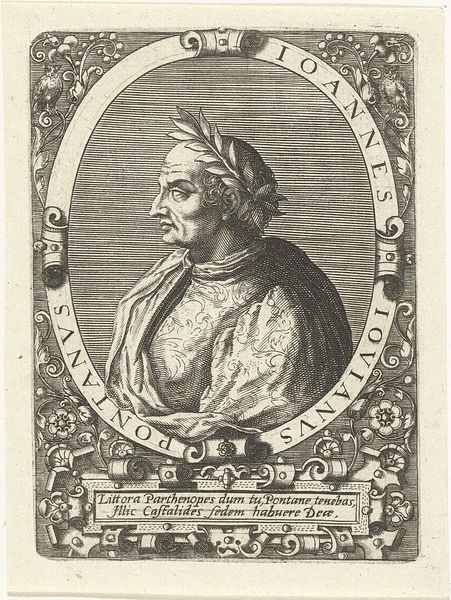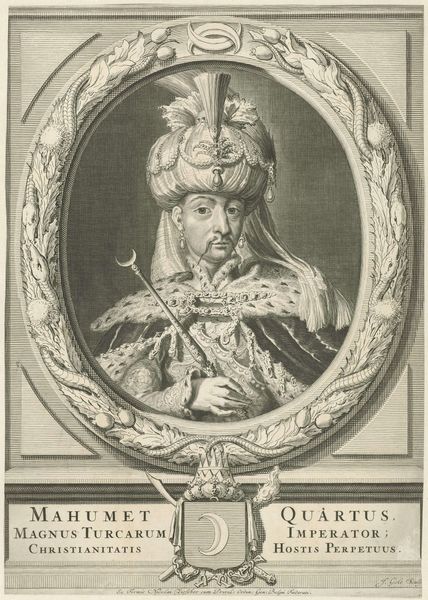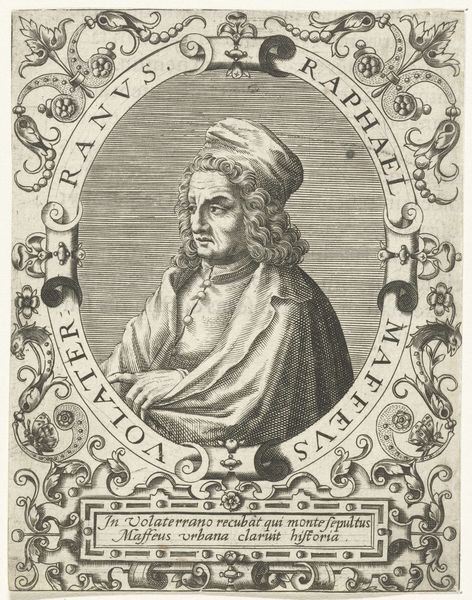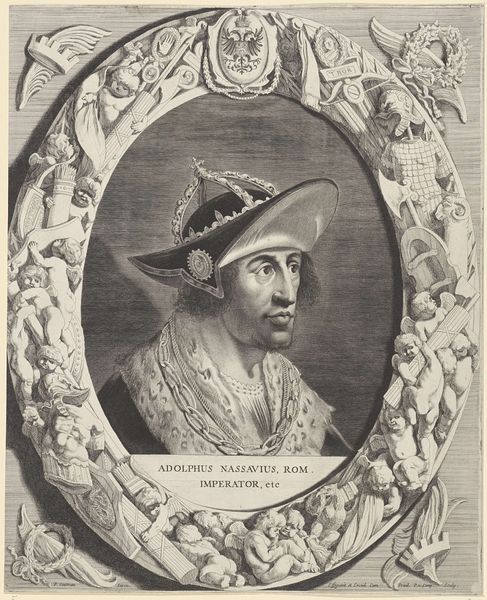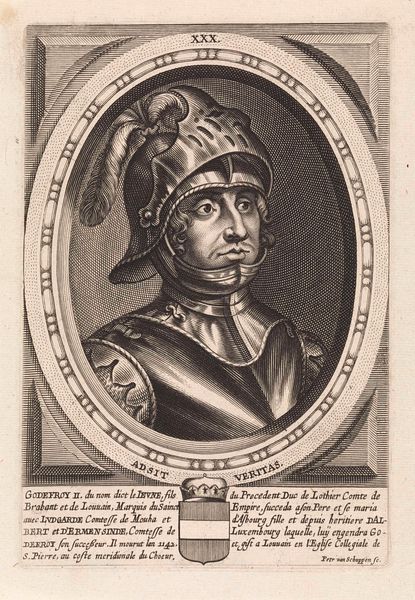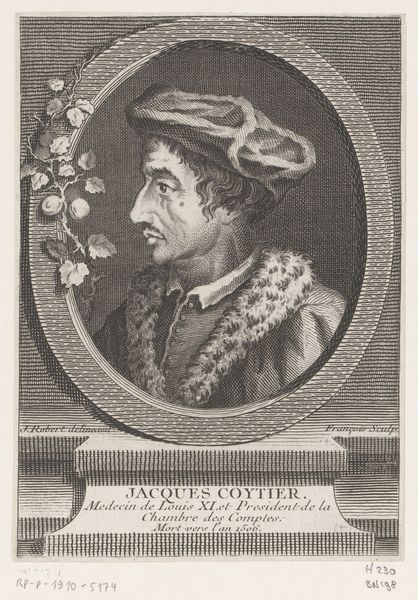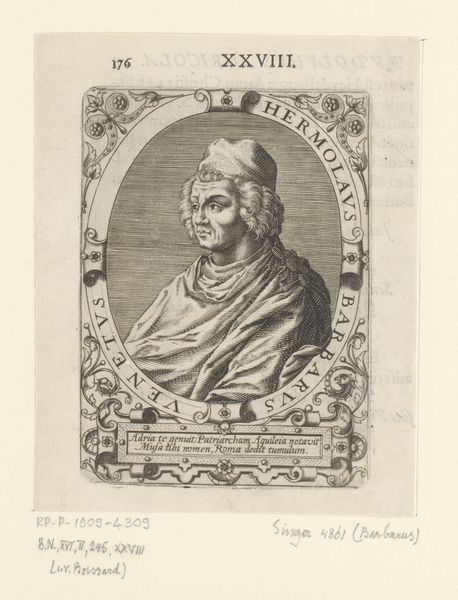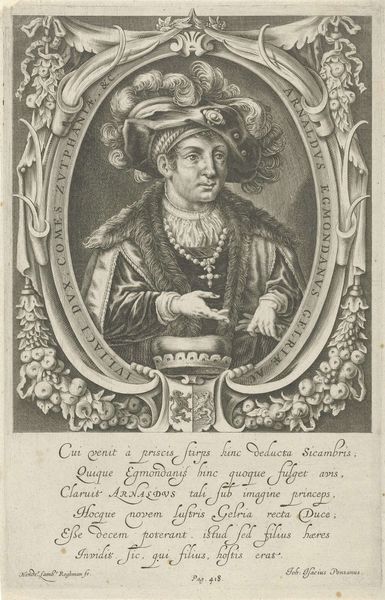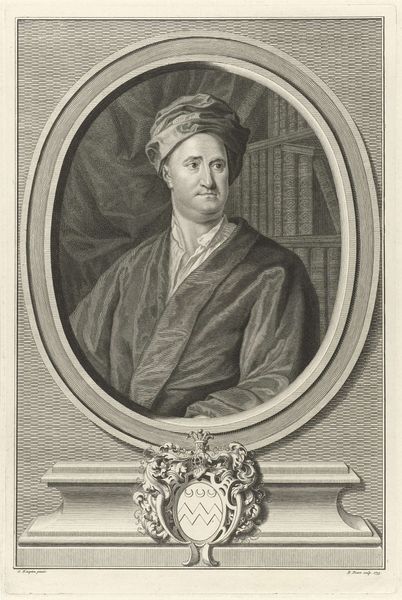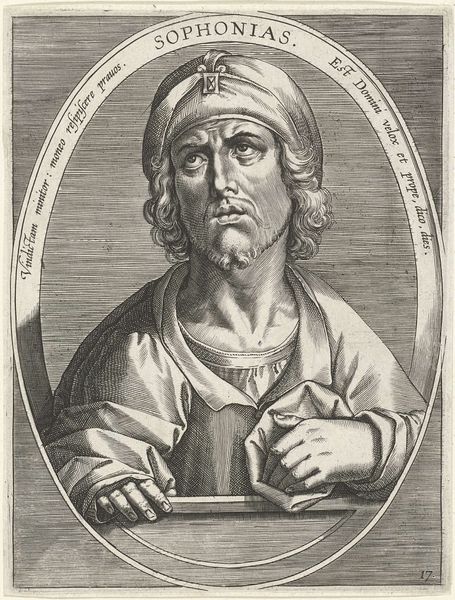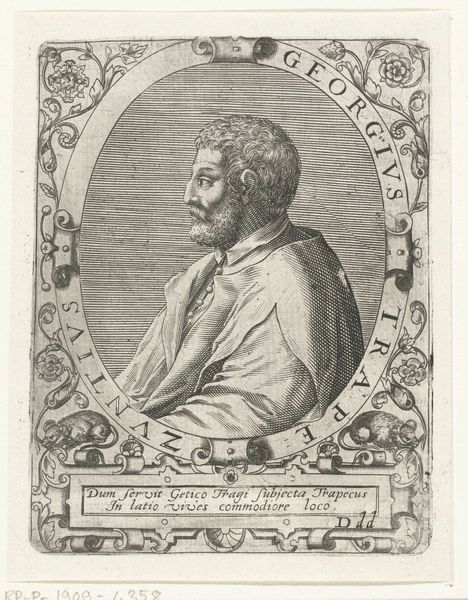
engraving
#
old engraving style
#
caricature
#
portrait reference
#
portrait drawing
#
history-painting
#
engraving
Dimensions: height 181 mm, width 100 mm
Copyright: Rijks Museum: Open Domain
Curator: Look at this striking engraving, "Portret van Nadir Sjah Afshar," created by François Morellon La Cave between 1731 and 1734. It’s currently housed here at the Rijksmuseum. Editor: There's an immediate boldness to this portrait. The subject is set against very deliberate cross-hatching; even in engraving, the texture communicates something substantial about both him and the frame around him. Curator: Exactly! As an engraving, its materials are quite humble: simply ink on paper. However, the process... That's where things get interesting. Think of the time, skill, and precise hand-movements needed to create all of those lines. It highlights a dedication to craft often unseen when reproducing royal imagery. What does it convey about status and work? Editor: I’m sensing a strong awareness of theatre from the artist here. The turban feels like a prop and emphasizes the character. It’s playing up the exoticism a bit. Does the production method also reflect, perhaps indirectly, the conditions for printed materials about foreign rulers at the time? It also raises questions around the role of the artist. Curator: It's less about straightforward "truth" and more about crafting an image that fits Western expectations, no? This piece presents Nadir Shah – also known as Tæhmas Kouli Khan– in a way that both celebrates and "others" him. The choice of engraving itself – easily reproduced, widely circulated – plays into that. What do you see? Editor: It feels slightly subversive to me, in a subtle way. Perhaps the print maker knew more than they were letting on. What initially seems to be respectful craftsmanship instead reveals underlying assumptions about power, East versus West. There’s a lot encoded there. Curator: Agreed! And beyond the socio-political elements, it prompts contemplation. Who are we when we become reduced to a circulated image? How can someone be a true original amid these endless material iterations? Editor: Very well said. For a relatively modest engraving, it provokes much wider thought regarding both ruler and craft.
Comments
No comments
Be the first to comment and join the conversation on the ultimate creative platform.


